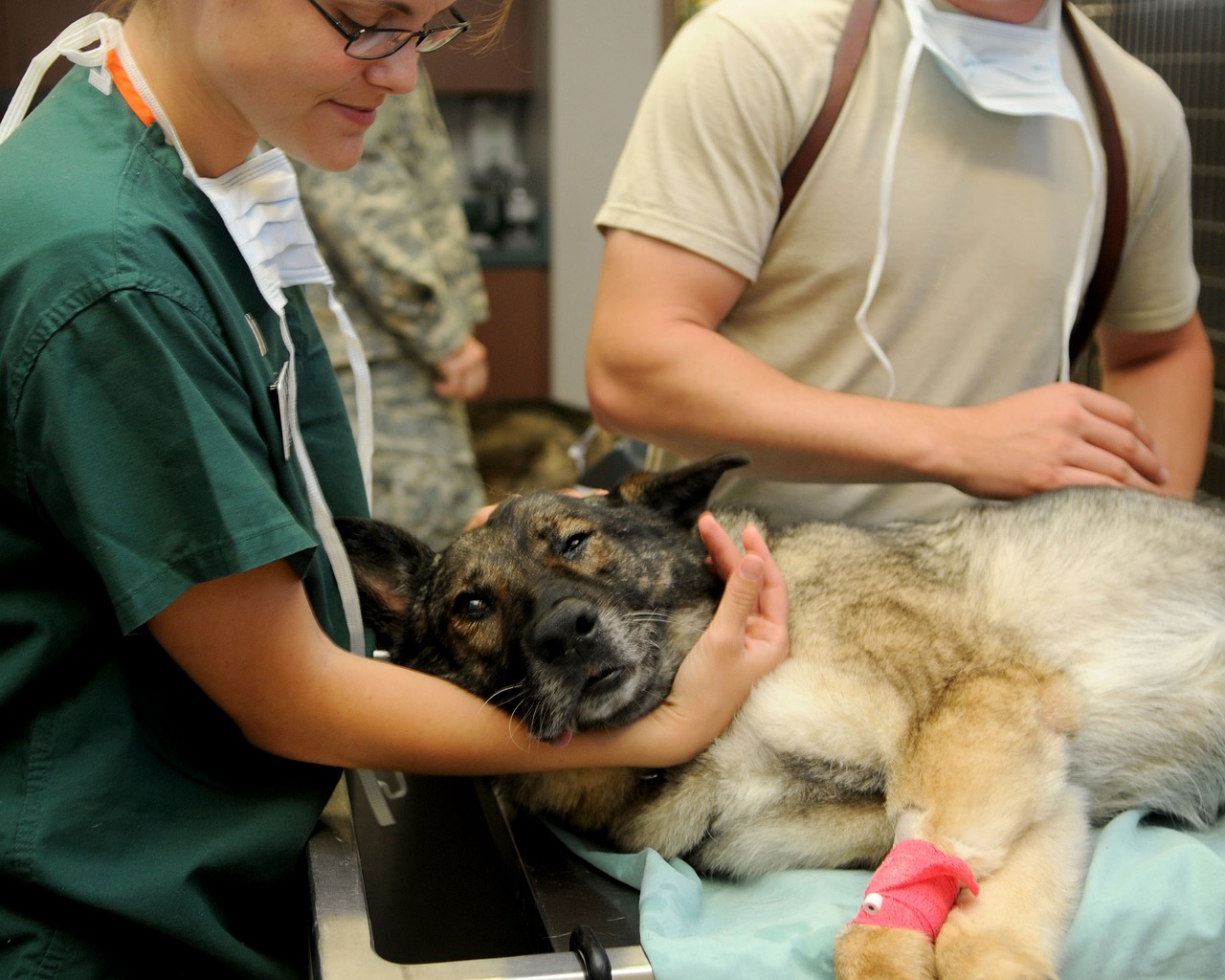Our dogs are part of the family, hence it’s important to prioritize their health. Dog owners have the capacity to independently carry out certain actions to enhance their dog’s health, like providing fresh water and sufficient physical exercise. However, it’s also necessary to consistently arrange visits to the veterinarian for check-ups and vaccinations.
It can be hard to tell if your dog is healthy or not, but there are some things you can look out for. This article will discuss how to tell if your dog is healthy and provide tips for keeping them that way.
One of the best ways to keep your dog healthy is to be aware of dogs’ most common health problems. Some health problems are breed-specific, while others can occur in any dog. Knowing what to watch for can help your dog get the treatment it needs before its health deteriorates.
Some Common Health Problems in Dog
Obesity
Obesity is one of the most common health problems in dogs due to a combination of factors such as excessive calorie intake from high-calorie treats or table scraps, lack of physical activity, and underlying medical conditions. This can lead to serious health issues such as diabetes, joint problems, heart disease, and reduced life expectancy. Dog owners must monitor their pet’s diet, exercise regularly, and consult a veterinarian to prevent and manage dog obesity.
Dental Problems
Dental problems are one of the most common health issues in dogs due to a combination of factors. Firstly, dogs’ natural behaviour involves chewing and gnawing on various objects, which can lead to wear and tear on their teeth over time. Additionally, many dogs are fed diets that may not adequately support dental health, leading to plaque and tartar buildup. This includes canned or soft dog food that can stick to their teeth and promote bacterial growth.
Dental problems in dogs can manifest in various forms. One common issue is periodontal disease, which affects the gums and supporting structures of the teeth. This condition occurs when plaque buildup leads to inflammation and infection. As a result, it can cause pain, bad breath (halitosis), bleeding gums, tooth loss, and even systemic health issues if left untreated.
Another prevalent dental problem among dogs is tooth decay or cavities. Dogs are susceptible to developing cavities from excessive sugar intake or poor oral hygiene practices like humans. These cavities can be painful for them and may require extraction or other corrective procedures.
Ear Infections
Dogs have long, floppy ears that create a warm, moist environment ideal for the growth of bacteria and yeast. Additionally, dogs with allergies, excessive ear hair, or narrow ear canals are more prone to developing ear infections. When these factors combine with moisture from swimming, bathing, or humid weather, it creates a perfect storm for infection. The symptoms of an ear infection in dogs include itching, redness, swelling, and a foul odour. If left untreated, the infection can spread and cause pain and discomfort for the dog.
Regular ear cleaning and maintenance can help prevent ear infections in dogs. Pet owners must inspect their dog’s ears regularly and seek veterinary care if any signs of infection are present. Prompt treatment is essential to prevent chronic or recurrent ear infections in dogs.


Arthritis
The condition typically develops as dogs age, leading to joint pain, stiffness, and decreased mobility. Large breed dogs and those with a genetic predisposition are particularly susceptible. This is because their larger body size puts more pressure on their joints, causing them to wear down over time. In addition, certain breeds may have structural abnormalities that make them more prone to developing arthritis.
While there is no cure for arthritis in dogs, several treatment options are available to alleviate pain and improve mobility. Veterinarians often prescribe anti-inflammatory medications such as nonsteroidal anti-inflammatory drugs (NSAIDs) to reduce swelling and discomfort. Other options may include joint supplements containing glucosamine and chondroitin sulfate that promote joint health.
Physical therapy exercises like swimming or gentle range-of-motion movements can also help strengthen muscles surrounding the affected joints and improve flexibility. Additionally, factors such as obesity, injury, and overexertion can exacerbate the development of arthritis in dogs.
Skin Allergies
Skin allergy is one of the most common health problems in dogs due to various factors such as genetics, environmental allergens, and food sensitivities. Dogs can develop allergies to pollen, dust mites, mould, and certain ingredients in their food. These allergies can cause itching, redness, and discomfort for the dog. Additionally, breeds with skin folds or thick coats are more prone to developing skin allergies. Environmental factors like pollution and climate change also contribute to dog skin issues. Proper grooming, regular vet check-ups and identifying and avoiding triggers can help manage skin allergies in dogs effectively.
Digestive Issues
Digestive issues are one of the most common health problems in dogs, affecting their overall well-being and causing discomfort. Several factors contribute to this prevalence, including dietary indiscretions, food allergies, sensitivities to certain ingredients, bacterial or viral infections, and underlying medical conditions such as pancreatitis or inflammatory bowel disease. Dogs are known for their indiscriminate eating habits, often consuming items that can upset their stomachs and lead to digestive disturbances.
Furthermore, the canine digestive system is sensitive and may have difficulty processing certain foods. The lack of proper nutrition or overeating can also lead to gastrointestinal upset in dogs. Stress and anxiety can also play a role in digestive issues, as they can affect the functioning of the digestive system. Recognizing the signs of digestive problems in dogs is crucial for timely intervention and treatment. Common symptoms include vomiting, diarrhoea, bloating, flatulence, and changes in appetite.
Given these factors, dog owners must provide a balanced diet and monitor their pet’s food intake. Additionally, supplements such as probiotics can be added to their diet to promote a healthy digestive system. Probiotics are beneficial bacteria that help maintain the balance of gut flora and aid in digestion.
Identify Early Signs and Symptoms
One of the best ways to ensure that your dog remains healthy is by being able to identify early signs and symptoms of illness. This way, you can begin treatment promptly, which may improve the outcome. By being aware of what to look for, you can better advocate for your pet’s health.
Dog’s Weight
One common issue that affects dogs is obesity. This occurs when a dog consumes more calories than it burns, increasing its body weight. Obesity can lead to several health problems, such as joint pain, heart disease, and diabetes. To help keep your dog healthy, ensure you know its healthy weight and closely monitor its food intake and exercise habits.
Oral Health


Another important thing to look out for is dental disease. Dental problems are common in dogs and can cause pain and infection if left untreated. To help keep your dog’s healthy teeth, brush them regularly and apply toothpaste with fluoride. If you notice problems with your dog’s teeth or other issues such as bad breath, seek veterinary advice immediately.
Dog’s Behaviour
Good dog owners know their dog’s attitudes aside from their physical attributes. Pet owners should be able to identify when the dog looks lethargic or shows irritability. Any changes in the physical and behavioural aspects may signify serious health issues.
Prevention is always better than cure. To ensure that your dog is always in good emotional and mental health, create an environment where they can be happy.
Dogs are social animals and need to be around people and other dogs. To keep your dog content, you must provide a good environment for it to live in. Provide your dog with a safe and secure area to play in. A crate, a room, or a large dog bed are suitable options. If your dog is not used to being crated, adjusting when confined may take some time.
When your dog is young, it may not be able to understand the needs of a dog. When training your dog, it is important to do so positively and reward it for doing what you ask. Socialising your dog with other dogs, children, and animals is important. Socialization helps build confidence in dogs and teaches them how to interact with other dogs and humans.
Checking your Dog’s Vital Signs
Dogs need routine vet checkups just like people do. During these checkups, your vet will look for signs that your dog isn’t healthy. Knowing what to look for, you can help your vet catch any potential problems.
One important thing to monitor is your dog’s vital signs. This includes their heart rate, breathing rate, and temperature. You can measure these things by taking your dog’s pulse, counting their breaths per minute, and using a thermometer.
If you notice that your dog’s vital signs are abnormal, it’s important to take them to a veterinarian immediately. Abnormal vital signs could signify serious health issues, such as an infection or heart disease. Early diagnosis and treatment are essential for the best chance of recovery.
Bringing Your Pets to the Vet
Bringing your dog for a regular checkup can help prevent some illnesses from getting serious. Dog breeds have specific illnesses that you should take note of as well. Veterinarians may need to perform the following:
Physical Examination


A physical examination is an important part of taking care of your dog. It can help you identify potential health risks and take steps to prevent them. During a physical exam, your veterinarian will check your dog’s body for abnormalities. They will also listen to your dog’s heart and lungs and feel their abdomen. Veterinarians may also check the following body parts of your dog:
- Dog’s ears for possible ear infection
- Dog’s nose
- Dog’s eyes
- Dog’s fur for possible infestation of ticks and flea droppings
- Dog’s nails for wounds
- Skin irritation caused by allergies or weather
- Dog’s mouth
Your veterinarian may order additional tests if you’re concerned about a specific health issue. For example, if you think your dog may be overweight, your vet may order a blood test to check for diabetes. They may order a faecal exam if you’re worried about a bacterial infection.
Regular physical exams are essential for keeping your dog healthy. They can help catch health problems early when they’re easier to treat.
Laboratory Tests
Lab tests are an important part of diagnosing and treating dogs. There are a variety of lab tests that can be performed, depending on the dog’s symptoms. Common lab tests include a complete blood count (CBC), a chemistry profile, and a urinalysis.
These tests can help veterinarians determine the cause of symptoms and prescribe the appropriate treatment. For example, if a dog is vomiting, a CBC could reveal that the dog has an infection or liver disease. A urinalysis might show that the dog has kidney disease.
Lab tests are also important for monitoring the progress of treatment. If a dog is being treated for diabetes, regular blood sugar measurements will help ensure the therapy is effective.
Lab tests can be expensive but often necessary to diagnose and treat dog diseases. A veterinarian can administer many tests on-site, including:
Blood Test
Blood tests are the most common and cheapest lab tests, but they can be dangerous to the animal. In some cases, blood tests can be inaccurate or misleading. For example, a blood glucose test may indicate that a dog has diabetes when it does not.
Urinalysis
A urinalysis is a diagnostic tool veterinarians use to assess dogs’ health. The test can detect many medical problems, including kidney disease, urinary tract infections, and diabetes. Urinalysis involves examining a sample of urine under a microscope to look for abnormalities in the composition and appearance of the urine. The test can also measure the amount of protein, blood, and other substances present in the urine.
Saliva Test
One way to tell if your dog is healthy is by checking their urine. A healthy dog will have urine that is light in colour and doesn’t have a strong odour. However, if your dog’s urine is dark yellow or orange, it could signify dehydration. If the urine has a strong bad odour, it could be a sign of infection.
Saliva testing is becoming a popular way to check the health of dogs. The test is non-invasive and can also provide information about various health conditions. Saliva testing can check for the presence of certain diseases, monitor the effectiveness of medication and supplements, and even help identify nutritional deficiencies.
The tests are available from several commercial laboratories, and various tests are available depending on the dog owner’s needs. One advantage of saliva testing is that it can assess a dog’s overall health and specific issues. For example, a dog owner might use a saliva test to check for signs of dental disease or monitor treatment progress for an illness.
X-rays
X-rays are a valuable diagnostic tool veterinarians use to help assess dogs’ health. They allow us to see inside the body and help identify problems such as fractures, foreign objects, and tumours. X-rays can also check the size and shape of organs and look for signs of infection or inflammation.
Ultrasounds
Ultrasounds are a valuable diagnostic tool for veterinarians. They use sound waves to create an image of the inside of the body. This image can be used to diagnose a variety of medical conditions. Ultrasounds often look for tumours, fluid build-up, and other abnormalities. They can also help identify problems with the heart, liver, and other organs.
In Conclusion
There are many ways to tell if your dog is healthy. By being aware of the common symptoms and health risks, you can be proactive in keeping your pet healthy. Regular checkups with a veterinarian are also important, as they can help identify any potential problems early on.



